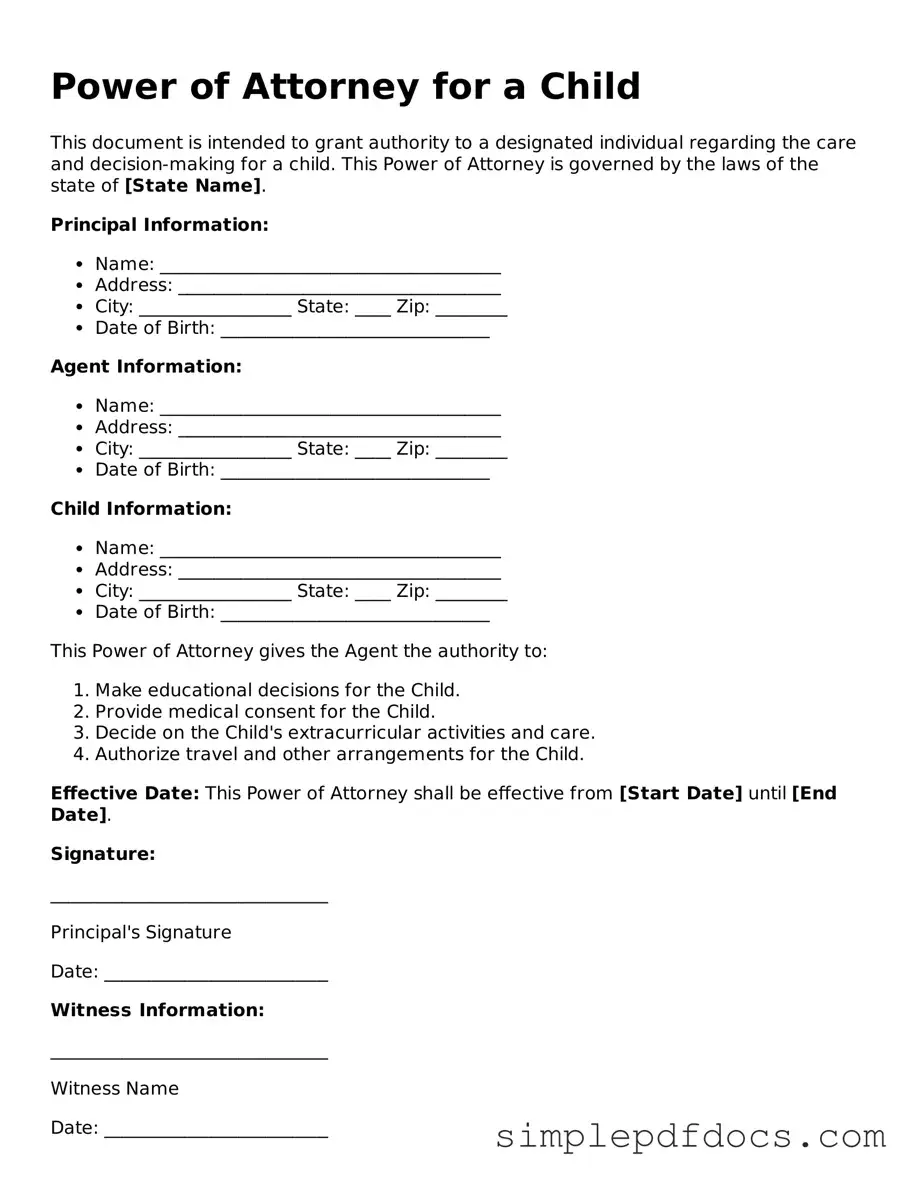Attorney-Approved Power of Attorney for a Child Form
The Power of Attorney for a Child form is a legal document that allows a parent or guardian to grant another adult the authority to make decisions on behalf of their child. This can be particularly useful in situations where the parent is unable to be present, such as during travel or medical emergencies. Understanding this form can empower caregivers and ensure that children's needs are met in a timely manner.
Get Document Here
